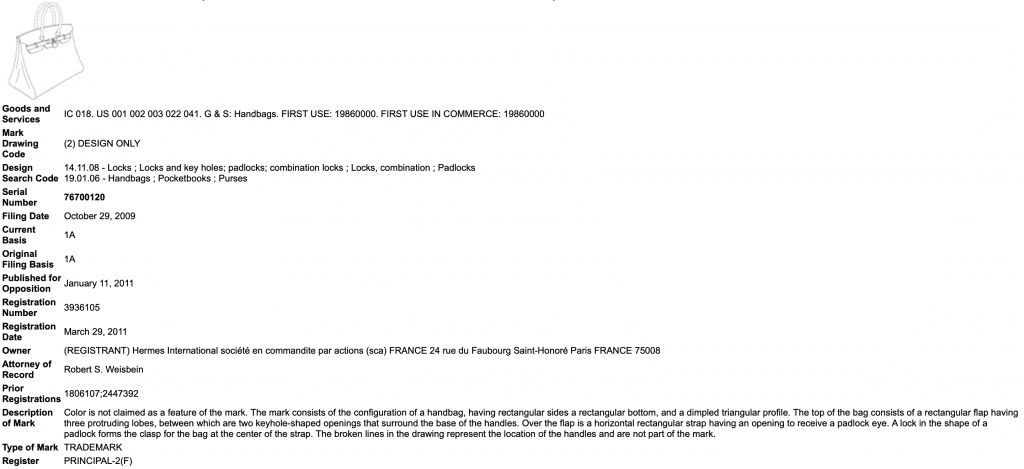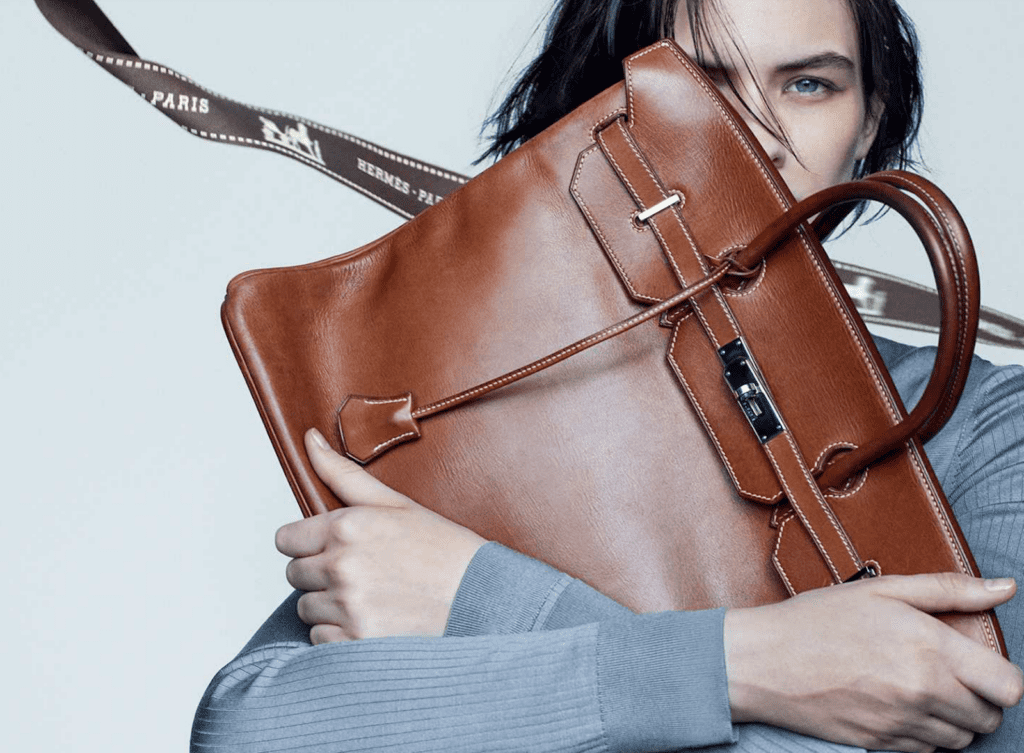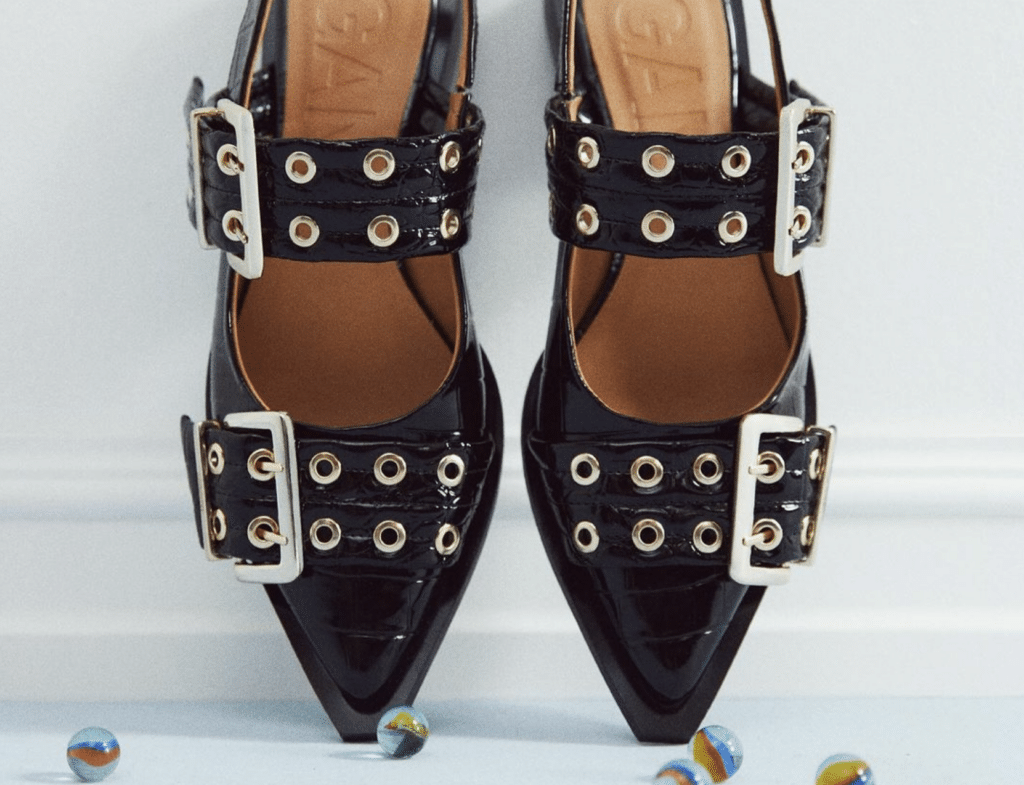A New York federal judge cemented a much-anticipated win for Hermès in a first-of-its-kind trademark case in the summer of 2023. The French luxury company waged the closely-watched lawsuit over the marketing and sale of non-fungible tokens that it argued, infringe and dilute one of the most valuable elements of its brand: The BIRKIN trademark. In an order on June 26, 2023, Judge Jed Rakoff of the U.S. District Court for the Southern District of New York granted Hermès’s motion to permanently block MetaBirkins creator Mason Rothschild from continuing to market, sell, and/or generate royalties from the Birkin artwork-linked NFTs and from using the MetaBirkins domain, among other things, while also denying Rothschild’s bid for a judgment of law in his favor – or alternatively, a new trial.
All along the way – from the filing of its complaint in January 2022 to the recently-ordered permanent injunction, which followed from a nine-day jury trial in February and a favorable verdict for Hermès, the Birkin bag-maker has shed significant (and somewhat unprecedented) light on its most famous handbag and the role that it plays in the larger ecosystem that is the Hermès brand.
Few companies have been as successful at positioning themselves in the mold of sheer luxury and cultivating ravenous demand as Hermès. Prior to the steady rise of the luxury resale market, the Birkin bag – which was first introduced in 1984 and bears a price tag of upwards of $10,000 – was more a mythical thing of luxury lore than it was an actually-attainable-accessory. Bearing the surname of the late actress Jane Birkin, the famed handbag came about thanks to a chance encounter between the British actress and style icon and former Hermès chairman Jean-Louis Dumas on a plane in 1981.
As the story goes, while flying between London and Paris, Ms. Birkin had expressed frustration to her seatmate about the disarray inside of her pocket-less non-Hermès bag and from that fortuitous meeting, the ultimate “it” bag was born: a virtually logo-less bag supremely-crafted from high-grade calfskin, complete with two interiors pockets, of course. The almost-40-year-old handbag style is so iconic that its appearance, alone, serves as an indicator of the brand responsible.
Breaking Down an “It” Bag
Against that background and in light of its relative unwillingness over the years to delve too deeply into the workings of its most famous offering (including how consumers can go about getting one), the claims that Hermès has made about the Birkin bag (particularly from a trademark/branding perspective) in connection with the MetaBirkins case essentially provide an overview of how to build the ultimate “it” bag, and thus, are worthy of attention …
Trademark Rights – Hermès maintains significant trademark rights in the BIRKIN name and the corresponding handbag trade dress, and has amassed registrations that extend to the “BIRKIN” word mark and the source-indicating design of the bag. The almost-190-year-old luxury brand describes the latter as: “The configuration of a handbag, having rectangular sides a rectangular bottom, and a dimpled triangular profile. The top of the bag consists of a rectangular flap having three protruding lobes, between which are two keyhole-shaped openings that surround the base of the handles. Over the flap is a horizontal rectangular strap having an opening to receive a padlock eye. A lock in the shape of a padlock forms the clasp for the bag at the center of the strap.”
Both of Hermès’s BIRKIN word mark (No. 2991927) and BIRKIN trade dress (No. 3936105) registrations in the U.S. are “in full force and effect and incontestable,” per Hermès.

– In addition to being registered in the U.S., Hermès stated that it has “registered the BIRKIN word mark and trade dress worldwide to identify its iconic handbag and has continuously used the BIRKIN mark and BIRKIN trade dress since the BIRKIN handbag was first introduced in U.S. commerce in 1986.”
– In particular, Hermès asserted in its complaint that “the distinctive shape and notoriety of the BIRKIN handbag has been judicially recognized around the world,” noting that it “has gone to, and continues to go to, great lengths to enforce [its] federally registered trademarks and protect their valuable goodwill.”
– “As a result of their widespread and constant use, Hermès’s federally registered trademarks have come to be known as source identifiers for Hermès and for renowned high-quality luxury goods,” Hermès further stated in its complaint.
– Hermès considers its trademarks to be “one of [its] main assets,” with Nicolas Martin, Hermès’s group general counsel, testifying during the trial that the BIRKIN trademark, in particular, is “invaluable” to Hermès.
Goodwill – Reflecting on the “substantial goodwill” that it enjoys in connection with the BIRKIN trademarks (i.e., the reputation/other intangible qualities that are tied to a company’s trademarks), Hermès asserted in its complaint that “throughout its history and expanding product lines in both domestic and international markets, Hermès has maintained its reputation for the manufacture of high-quality goods and its trademarks have become the symbols of modern luxury.”
In terms of what drives such goodwill, Hermès summarized it by way of the following language: “Each BIRKIN handbag is handcrafted from the finest leather by experienced artisans in France. The manufacturing of a single BIRKIN handbag requires more than seventeen hours of an artisan’s time. The intensive labor and craftmanship and high-quality leathers required makes the BIRKIN handbag difficult to produce and expensive.” (It also noted, “The price of a BIRKIN handbag from thousands of dollars to over one hundred thousand dollars,” [and] “demand for BIRKIN handbags is such that Hermès cannot satisfy all requests.”)
Fame – The Birkin handbag has become “one of Hermès’s most iconic products, if not its most iconic product,” Hermès Americas President and CEO Robert Chavez testified early this year, stating that the BIRKIN trademark is “invaluable” because “it’s [Hermès’s] most well-known and recognizable product.” By way of example, Hermès cited a September 2021 Vanity Fair article that noted, “There is a kind of fashion object so long- lasting, so tirelessly wanted that its name becomes recognizable, a metonym for the brand that made it: the Air Jordan, the Love bracelet. Few brands, successful though they may be, attain that kind of saturation. Hermès has done it twice: the Birkin and, arguably the first of the household-name phenomena, the Kelly.”
Mr. Chavez further testified that Birkin handbags are recognizable “[b]ecause of all the publicity, attention, media that’s been given to the bag over the many, many decades, people recognize the bag from a distance. They recognize it in photographs. They recognize it on the street. It’s just a very highly recognizable handbag.”
Still yet, Hermès asserted that the BIRKIN trademark is “so well-known that one of the very first Birkin handbags was placed on display at an art exhibition in the Victoria & Albert Museum in London, England from April 2020 through January 2021.” And the company noted that the fame of the Birkin bag and relevant trademarks in not limited from a geographic point of view, and instead, the BIRKIN marks are “recognized throughout the world and U.S.”

The Bottom Line on the fame front: “Despite the price and exclusivity, the BIRKIN handbag has become a household name and [its] well known by the general public, both in name and by its distinctive design,” as Hermès asserted in its complaint.
Advertising Spend/Efforts – Hermès told the court that it spends “millions of dollars a year in advertising, including advertising the Birkin handbag.” In particular, counsel for the brand asserted that “since as early as 2000, Hermès has expended millions of dollars in the United States advertising the BIRKIN trademark and Birkin trade dress. Such advertising – at least some of which amounts to “look-for” advertising or ads that draw specific attention to the product configuration, making it more memorable to the public – “has been placed in publications based out of the State and City of New York: The New York Times, Elle, and Vogue.” As a result of such advertising, Hermès stated, “Since 2000, [it] has sold thousands of Birkin handbags featuring the BIRKIN trademark and Birkin trade dress in the U.S.”
Unsolicited Media/Attention – Delving into another one of the secondary meaning factors, Hermès stated that “without any solicitation from [the company, itself], the BIRKIN handbag and BIRKIN mark have been featured in numerous various media, magazines, television shows, and films.” Martin testified at trial that “media coverage for the Birkin handbag is unsolicited.”
In particular, Hermès confirmed that the Birkin handbag has been showcased in U.S. television and film. “Most notably,” the BIRKIN handbag was a major plot point in the 2001 Sex and the City episode “Coulda, Woulda, Shoulda” – a fictional episode that “mirrored the exclusivity and prestige associated with the Birkin handbag in real life and documented one of the character’s difficulties in acquiring a Birkin handbag.” It noted in its complaint that the Birkin handbag has also been featured in other television shows, including episodes of Gilmore Girls, Gossip Girl, Will & Grace, and How I Met Your Mother, and in films, such as The Devil Wears Prada, Sex and The City 2, The Royal Tenenbaums, and Don’t Look Up.
The Birkin bag is also “a favorite among celebrities, who are routinely featured in news and magazine articles carrying the Birkin handbag,” per Hermès. “There are entire articles dedicated to identifying the celebrities that love and own Birkin handbags.”
Investment Status – In its complaint, Hermès spoke to the fact that Birkin “has been recognized as one of the best investments any person can make with its increasing value beating returns from the stock market and even gold.” The company points to a 2016 article from Time that called the BIRKIN handbag “a Better Investment Than Gold.” The article explained, according to Hermès, “that the annual return on a Birkin [handbag] was 14.2 percent compared to the S&P [500] average of 8.7 percent a year and gold’s -1.5 percent.”
Fast forward to 2019, and Hermès stated that “the Birkin handbag was recognized for ‘its 17 percent rate of return which outperforms other more traditional forms of investment’ and included in an index of other art and luxury goods for investment purposes. In the 30 plus years since it was introduced, the BIRKIN handbag ‘has appreciated in value by 500 percent.’”
Sales Figures – While Hermès has traditionally been tight-lipped about the sales and volume metrics for the Birkin bag, it stated in its complaint that it has “sold millions of dollars’ worth of BIRKIN handbags in significant quantities since its inception in 1986, [with] such sales occur[ing] in the United States, France, and throughout the world.” Chavez testified early this year that Hermès has sold “at least $100 million dollars of Birkin handbags per year for the last decade,” and has generated a total of “over a billion dollars of sales of the Birkin handbag over the past 10 years.”
(For some broader context, Bernstein analyst Luca Solca estimated back in 2016 that Hermès was making/selling 70,000 Birkin bags every year, with a million-or-so already in circulation; that number has likely increased in recent years due to expanding production capacity, as Hermès continues to open new or expanded manufacturing facilities, including almost a dozen new or expanded manufacturing outposts in France between 2010 and June 2023.)
*This article was initially published on July 3, 2023.











